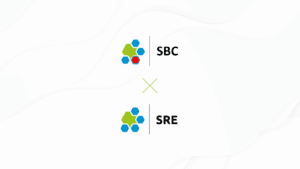Microsoft’s telecoms coming of age?
Microsoft makes telco friends with Direct Routing for Teams
It’s a strange concept to think of Microsoft, one of the world’s biggest technology companies and probably the longest established name in computing, coming of age.
Over the last few years I’ve chaired a number of panel discussions centred around whether Microsoft was a threat or an opportunity. In 2017 when they announced that Skype for Business was being rebranded as Teams we all raised our eyes skyward and said “not again – not another name change”. We all left the room thinking it was business as usual where Microsoft was concerned. They were after global telephony domination and there was nothing in it for the telecoms community.
I have to say I’ve changed my mind. Microsoft have opened up to working with the telecoms carrier community. Come of age if you like. Hitherto if you wanted to use voice and phone system features in Teams you had to sign up for Microsoft’s own Calling Plans for Phone Systems. This posed some problems, particularly if you were a business operating in global markets – a natural user community for Microsoft Teams. Microsoft only operate voice services in certain countries. If you wanted inbound local numbers in countries not supported by Microsoft that was tough.
Now Microsoft are opening their doors to the carrier community by offering Direct Routing of phone calls from carriers to their Teams cloud environment. The Direct Routing for Teams has a number of benefits to all concerned.
For Microsoft it enables inbound dialing from countries not supported by them for telephony and makes it more likely that their big Enterprise customer base will use more of their products. Carriers get to keep their customers and Enterprises will not have to disentangle themselves from often complex telephony contracts with a variety of start and finishing periods.
I learnt all this at a workshop at the Microsoft offices in Copenhagen. The meeting was organised by Netaxis partner Ribbon Communications who invited around 20 of their carrier customers (and Netaxis). The room was packed and the feeling from the Ribbon side was that they could have had even more come along had it been at a bigger venue.
Ribbon’s pitch is of course that carriers can use their Microsoft Teams Certified Session Border Controllers (SBCs) to facilitate the SIP trunk services into the Teams cloud. Netaxis, as a Ribbon Silver Partner were invited along to provide support.
An SBC is a perfect tool for the job of connecting voice services to Teams. An SBC can connect many legacy systems to Teams which means companies don’t have to throw away existing telecom infrastructure investments. These investments can be managed out in a controlled manner when they reach the natural end to their lifecycle. Enterprises planning on migrating their whole company to a native Teams ecosystem can use an SBC to de-risk the process by doing it on a site by site basis.
Direct Routing for Teams isn’t going to appeal to everyone. Many telcos will already have embarked on their own competitive solutions but this is a big market with room for multiple players and there is no doubt that many enterprises with a big incumbent Microsoft estate will want to continue with an environment they know.
I’d like to finish off this short but enthusiastic piece on Teams with the analogy of the wind and the sun. Where it comes to telecoms Microsoft have stopped blowing and are shining warmth on our world. Get your coat off, roll up your sleeves and get Direct Routing in to Microsoft Teams. Oh and get in touch with Netaxis because we can help you do this 🙂
Also check out our Microsoft Teams Solutions page.





